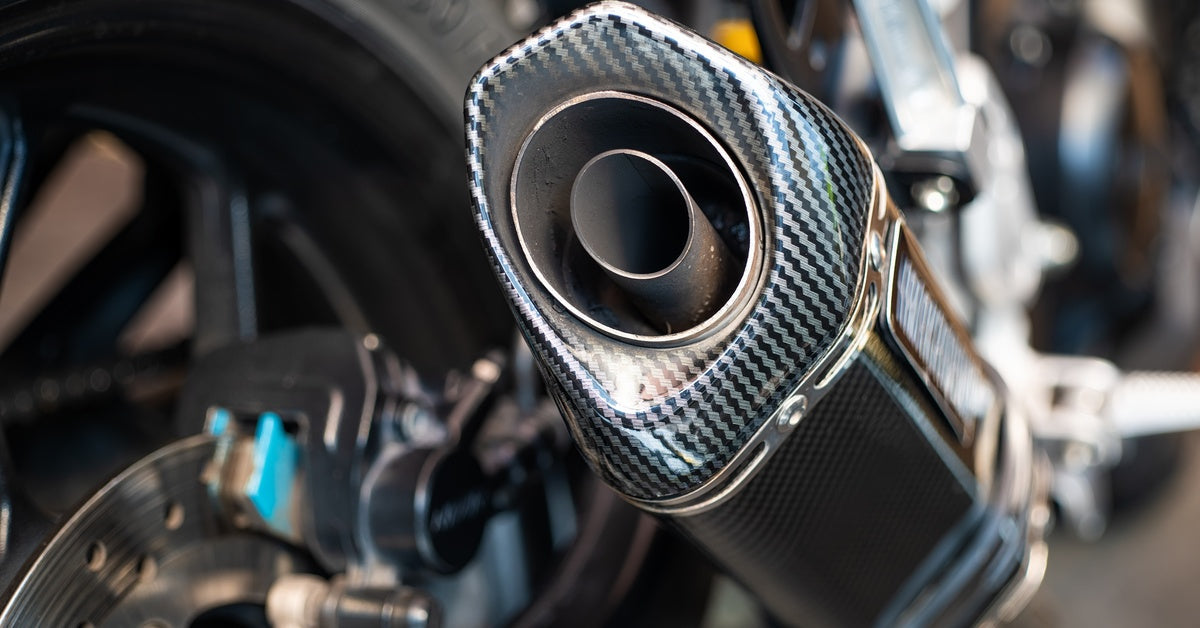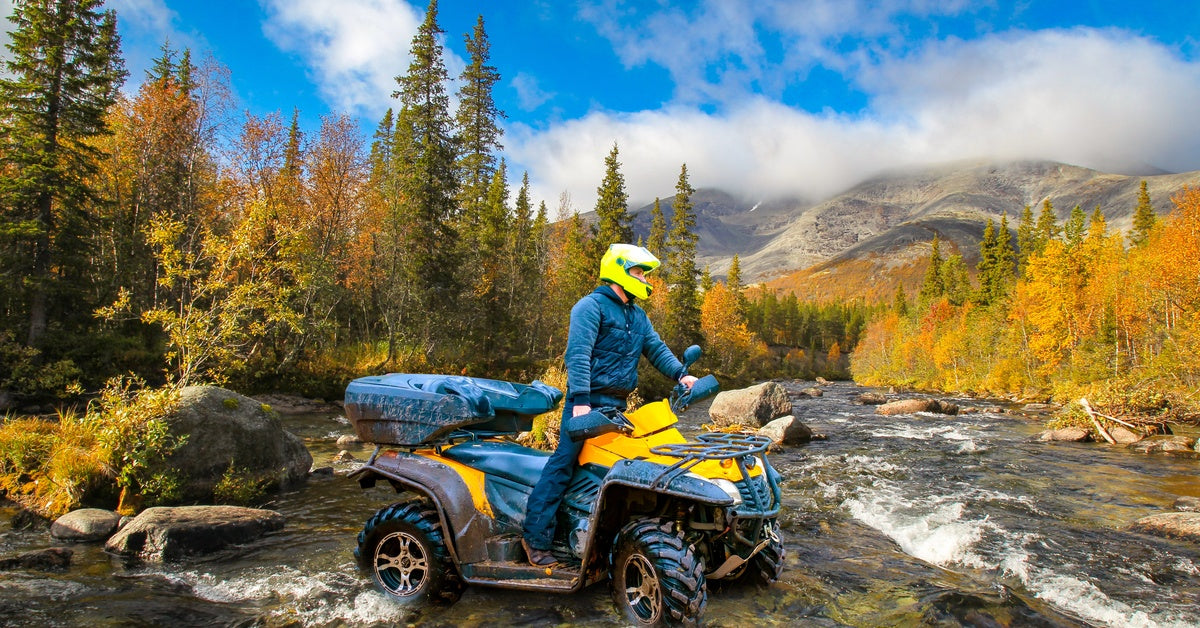
Spark plug fouling can ruin any ATV ride with misfires, poor acceleration, and engine stalls. What actually causes this issue, and how can you stop it before it happens? This guide has everything you should know about ATV spark plug fouling for smoother rides in your thrilling adventures.
What Causes ATV Spark Plug Fouling
Several factors contribute to fouling, but the most common culprit is carbon buildup on the electrode. Carbon accumulates when fuel burns incompletely, leaving sooty deposits. This happens when riders use their vehicles at low RPMs or allow engines to idle for extended periods.
Different Types of Fouling
Visual inspection reveals different fouling patterns that point to specific problems. Carbon fouling covers the electrode and insulator. This type typically results from rich fuel mixtures, clogged air filters, or prolonged low-speed operation.
Oil fouling shows up as black deposits with an oily texture. The plug may feel slippery when removed, and you might notice blue smoke from the exhaust. Oil fouling indicates internal engine problems that require immediate attention.
Fuel fouling creates wet deposits that smell strongly of gasoline. Fresh fuel on the plug suggests flooding, while dried fuel deposits indicate contamination or additive buildup.
Recognize the Early Warning Signs
Hard starting, especially when cold, often alludes to fouling. Rough idling and hesitation during acceleration suggest partial fouling affecting combustion quality. Engine misfiring when climbing hills or accelerating hard also points to fouling issues.
How Riding Conditions Affect Fouling

Different terrains and riding styles create varying fouling risks. Muddy conditions expose engines to fine particles that can contaminate fuel systems and air filters. Sand riding generates extreme heat that can cause deposits to bake onto plugs.
Technical trail riding with frequent stops and starts prevents plugs from reaching optimal operating temperatures. Rock crawling and hill climbing under heavy loads can cause rich fuel conditions that promote carbon buildup.
Water crossings introduce moisture into fuel systems, creating conditions favorable for fouling. Deep water can also cause hydro-lock situations that damage spark plugs and other engine components.
Fuel Quality Impact on Plug Performance
Ethanol-blended fuels create unique fouling challenges for ATV engines. Ethanol attracts moisture from the atmosphere, leading to phase separation where water and ethanol settle separately from gasoline. This mixture burns poorly and leaves deposits on plugs.
Old fuel is another factor that can cause fouling. Oxidation creates gum and varnish deposits that coat spark plugs and fuel system components. These deposits resist normal combustion temperatures and accumulate over multiple ride cycles.
Contaminated fuel from dirty storage containers or poor-quality sources introduces particles and chemicals that foul plugs rapidly. Always use fresh fuel from reputable brands.
Fuel Additive Effects
Fuel additives marketed for performance enhancement can sometimes be a problem. Octane boosters, lead substitutes, and other chemical additives may leave metallic deposits on plugs. Fuel stabilizers prevent fouling when storing ATVs for extended periods. However, overuse of stabilizers can create deposits of their own, so follow manufacturer recommendations carefully.
Air Filter Connections to Fouling
Restricted airflow causes engines to run rich, increasing carbon deposit formation on spark plugs. Torn or improperly sealed air filters allow dirt and debris into engines. These particles can damage cylinder walls and create blow-by that leads to oil fouling.
Over-oiled foam air filters can cause fouling when excess oil enters the intake system. The oil burns in cylinders and deposits on plugs, creating fouling conditions.
Filter Maintenance Practices
We recommend cleaning air filters based on the riding conditions. Dusty conditions will require more frequent cleaning compared to cleaner environments. Use filter oils and cleaners designed for the filter type. Improper products can damage filters or create fouling problems.
Carburetor and Fuel Injection Factors
Carburetor adjustments play a big role in how quickly fouling occurs. A rich fuel mixture leads to carbon buildup, while a lean mixture can cause overheating and damage to the electrodes.
A dirty carburetor with clogged jets can lead to uneven fuel delivery. Issues with the float can cause flooding and fuel fouling. For fuel injection systems, dirty injectors can also cause problems. Faulty oxygen sensors can misread data, causing the engine control unit (ECU) to deliver the wrong fuel mixture.
Altitude and Temperature Compensation
Altitude changes affect air density and require carburetor or ECU adjustments for appropriate air-to-fuel ratios. Temperature variations affect fuel vaporization and air density. Modern fuel injection systems compensate automatically, but carbureted engines may require seasonal adjustments.
Engine Temperature
Engines need to reach the right temperature to keep the plugs clean. Short trips and excessive idling can stop the engine from getting hot enough, leading to buildup. Cooling system problems that cause overheating can damage spark plugs and create conditions for fouling. Conversely, overcooling prevents combustion and promotes deposit formation.
Thermostat problems affect engine warm-up times and operating temperatures. Stuck-open thermostats prevent engines from reaching optimal temperatures, while stuck-closed thermostats cause overheating.
Riding Technique Modifications

Vary the engine RPM during your rides so that the spark plugs reach self-cleaning temperatures. Avoid excessive idling and include higher-speed sections if the trail conditions allow.
Always let the engine warm up before pushing it. Cold engines tend to run rich, which can increase the risk of fouling. Whenever possible, end your rides with a brief high-speed run to burn off any deposits that may have built up during slower, technical sections.
When To Replace vs. Clean Plugs
You can remove light carbon buildup with a wire brush or sandblasting. Keep in mind that cleaning doesn’t solve the root of the problem. Oil fouling typically requires plug replacement because oil penetrates porcelain insulators and cannot be completely removed. Attempting to clean oil-fouled plugs rarely restores performance.
Immediately replace severely fouled plugs with melted electrodes or cracked insulators. Attempting to clean damaged plugs creates safety hazards and poor engine performance.
Choose the Right Replacement Plugs
Everything you should know about ATV spark plug fouling comes down to prevention through maintenance and quality components. If you realize you need to replace your plugs, you’ll want to match the heat ranges to your riding conditions and engine modifications. Verify gap settings for your engine specifications. Incorrect gaps can cause misfiring and accelerate fouling problems.
Check your current spark plugs to spot fouling patterns and understand what’s causing the issue. This will help you decide if a replacement is needed or if you need to address the root cause. To avoid future problems, set up regular maintenance routines—you don’t want to get stuck on the trail! You might also want to upgrade to high-quality ATV spark plugs that suit your riding style. E3 Spark Plugs offers reliable, high-performance options to keep you going. Visit our expansive collection to learn more!







